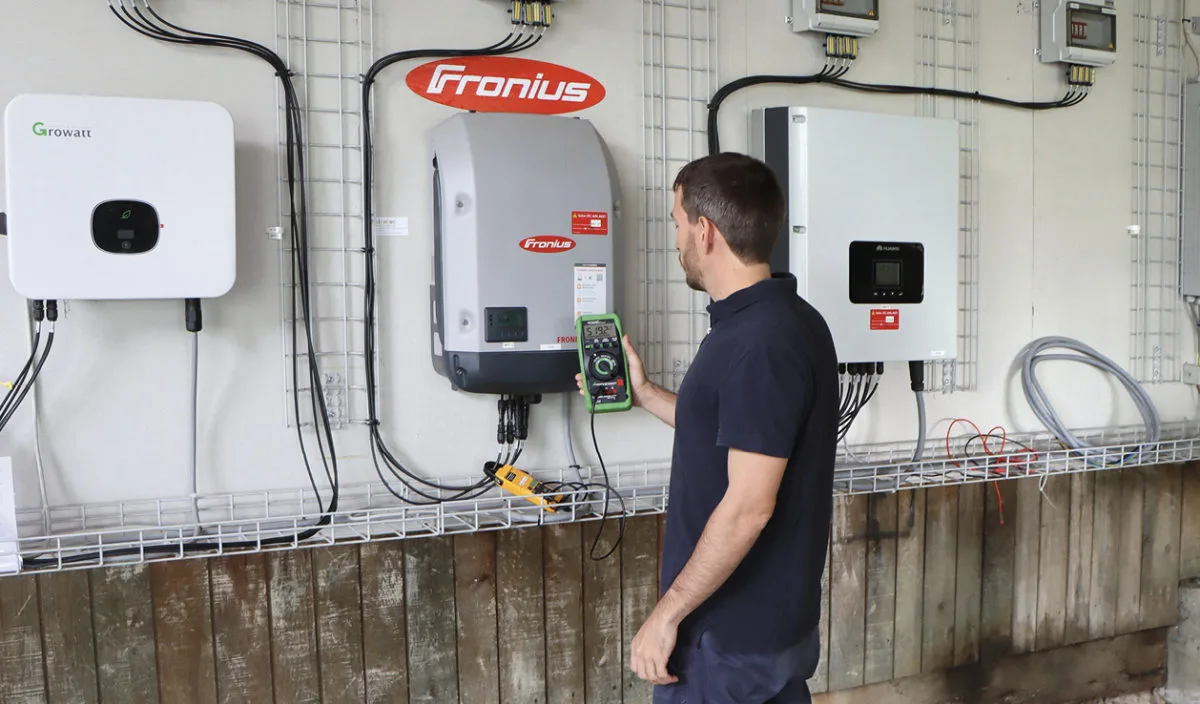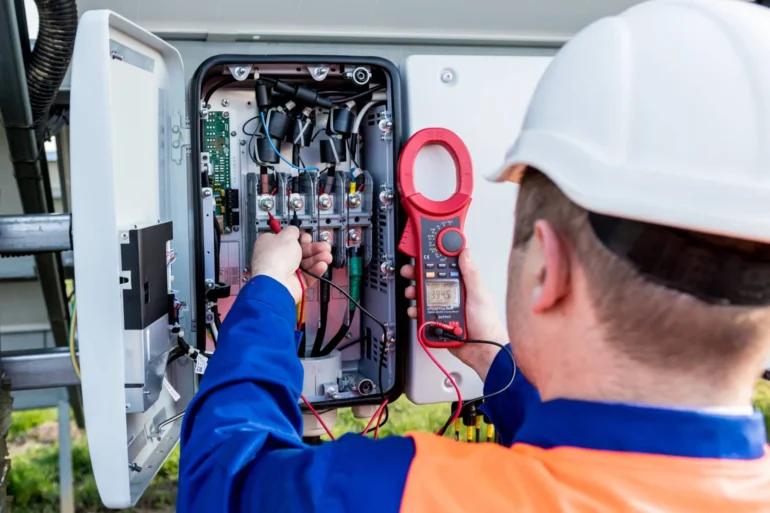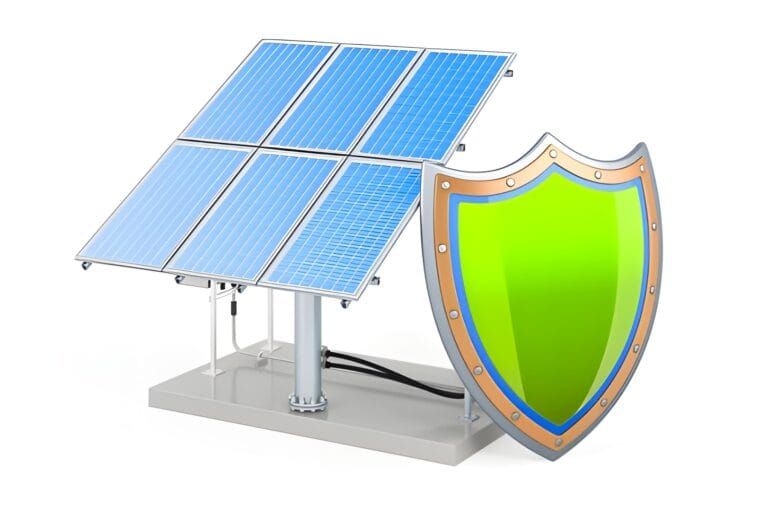Welcome to our comprehensive guide on solar inverter replacement costs! As an essential component of any solar energy system, the inverter plays a crucial role in converting DC power generated by solar panels into AC power for use in your home or business. Over time, inverters may require replacement due to age, wear and tear, or technological advancements. In this blog, we’ll delve into everything you need to know about solar inverter replacement costs, including factors influencing pricing, average cost estimates, additional expenses to consider, and strategies for managing replacement costs.
Overview of Solar Inverters
Solar inverters are vital components of solar energy systems responsible for converting the direct current (DC) electricity produced by solar panels into alternating current (AC) electricity that can be used to power household appliances and electronics. Essentially, inverters act as the bridge between the solar panels and the electrical grid, ensuring that the electricity generated is compatible with standard home or business electrical systems. Without inverters, the electricity generated by solar panels would be unusable, making inverters an indispensable part of any solar energy setup.
Importance of Understanding Replacement Costs
Understanding replacement costs for solar inverters is crucial for homeowners and businesses alike. Solar inverters have a finite lifespan, typically ranging from 10 to 15 years or more, depending on various factors such as usage, environmental conditions, and maintenance. As inverters age, they may become less efficient or fail altogether, requiring replacement to maintain the performance and reliability of the solar energy system. By understanding replacement costs, individuals can effectively budget for potential expenses associated with inverter replacement and plan for necessary maintenance or upgrades accordingly.
Factors Affecting Replacement Costs
Understanding the various factors influencing solar inverter replacement costs is essential for homeowners and businesses to effectively budget and plan for maintenance expenses.
Age and Warranty Status of the Inverter
The age and warranty status of the inverter are critical factors influencing replacement costs. Inverters typically come with warranties ranging from 5 to 25 years, covering defects in materials and workmanship. As inverters age, their performance may degrade, and they become more prone to failure. If the inverter fails within the warranty period, replacement costs may be covered by the manufacturer. However, if the warranty has expired, homeowners or businesses may be responsible for covering the full cost of replacement, including parts and labor.
Type and Brand of the Inverter
The type and brand of the inverter also impact replacement costs. Different types of inverters, such as string inverters, microinverters, or power optimizers, vary in terms of upfront cost, performance, and reliability. Higher-quality inverters from reputable brands may have a higher initial cost but tend to offer better performance and longevity, reducing the likelihood of premature failure and replacement. Conversely, lower-cost or generic inverters may be more prone to failure and may require more frequent replacement, leading to higher long-term costs.
 Complexity of the Replacement Process
Complexity of the Replacement Process
The complexity of the replacement process can significantly affect replacement costs. Factors such as the size and configuration of the solar energy system, accessibility of the inverter location, and any additional modifications or upgrades needed can impact the time and labor required for replacement. In some cases, replacing an inverter may be a straightforward process that can be completed relatively quickly and inexpensively. However, in other cases, particularly for larger or more complex systems, replacement may require more extensive labor and specialized equipment, resulting in higher overall costs.
Labor and Installation Fees
Labor and installation fees are significant components of replacement costs. Hiring a qualified solar installer or technician to replace the inverter ensures proper installation and compliance with local building codes and safety regulations. Labor fees can vary depending on the complexity of the replacement process, the skill level of the installer, and local labor rates. Additionally, installation fees may include costs associated with diagnostic tests, troubleshooting, permitting, and inspection, further contributing to replacement costs. Understanding the labor and installation fees involved in inverter replacement allows homeowners and businesses to budget accordingly and ensure that replacement is carried out safely and efficiently.
Average Cost Estimates
Understanding the average estimates for solar inverter replacement costs provides valuable insight into the financial implications of maintaining a solar energy system.
Typical Range of Solar Inverter Replacement Costs
The typical range of solar inverter replacement costs varies depending on various factors such as the type of inverter, size of the system, and local market conditions. On average, homeowners can expect to pay anywhere from $1,000 to $5,000 for a standard inverter replacement. This cost includes the price of the new inverter, labor fees for installation, and any additional expenses such as diagnostic tests or permitting.
Variations Based on Inverter Size and Capacity
The size and capacity of the inverter also influence replacement costs. Larger inverters designed for high-capacity solar energy systems may have higher upfront costs compared to smaller inverters intended for residential or small-scale applications. Similarly, inverters with higher power output ratings or advanced features may command a premium price. Homeowners with larger solar energy systems can expect to pay more for inverter replacement compared to those with smaller systems due to the increased complexity and labor involved.
Comparison of Costs for Different Types of Inverters
The cost of inverter replacement can vary significantly depending on the type of inverter being replaced. String inverters, which are commonly used in traditional solar energy systems, tend to have lower upfront costs but may require more frequent replacement compared to newer technologies such as microinverters or power optimizers. Microinverters and power optimizers typically have higher initial costs but offer benefits such as increased energy production and system monitoring capabilities, potentially reducing long-term replacement costs. Understanding the cost differences between different types of inverters allows homeowners to make informed decisions about which type of inverter best suits their needs and budget constraints.
Additional Expenses to Consider
Understanding the additional expenses associated with solar inverter replacement costs is crucial for homeowners to budget accurately and avoid unexpected costs.
Diagnostic and Troubleshooting Fees
Diagnostic and troubleshooting fees are common additional expenses that homeowners may encounter during the inverter replacement process. Before replacing the inverter, technicians may need to perform diagnostic tests to identify the root cause of the issue and determine if replacement is necessary. These tests may include checking electrical connections, conducting voltage and current measurements, and analyzing system performance data. Depending on the complexity of the diagnostic process and the time required for troubleshooting, homeowners may incur additional fees for these services. However, investing in thorough diagnostic testing upfront can help ensure that the underlying problem is properly addressed and prevent future issues from arising.
Permitting and Inspection Costs
Permitting and inspection costs are another important consideration when budgeting for solar inverter replacement. In many jurisdictions, homeowners are required to obtain permits from local building authorities before making any modifications to their solar energy systems, including inverter replacement. Permitting fees vary depending on the location and scope of the project but typically range from a few hundred to several hundred dollars. After the replacement is completed, homeowners may need to schedule inspections to verify that the installation meets local building codes and safety standards.
Inspection fees are usually charged separately and can add to the overall cost of the replacement process. By understanding the permitting and inspection requirements in their area and budgeting for associated fees, homeowners can ensure that the replacement project proceeds smoothly and complies with regulatory requirements.
Potential Upgrades or Modifications to the System
During the inverter replacement process, homeowners may have the opportunity to consider potential upgrades or modifications to their solar energy systems. For example, if the existing inverter is outdated or underperforming, homeowners may choose to upgrade to a newer model with advanced features or higher efficiency ratings. Similarly, homeowners may opt to install additional monitoring equipment or accessories to improve system performance or enhance system monitoring capabilities.
While these upgrades can provide long-term benefits, they may also incur additional costs beyond the basic replacement expenses. By evaluating potential upgrades and modifications in advance and weighing the associated costs and benefits, homeowners can make informed decisions about how to optimize their solar energy systems for maximum efficiency and performance.
Strategies for Managing Solar Inverter Replacement Costs
Exploring effective strategies for managing solar inverter replacement costs is essential for homeowners to ensure the longevity and efficiency of their solar energy systems.
Regular Maintenance and Monitoring
One of the most proactive strategies for managing solar inverter replacement costs is to prioritize regular maintenance and monitoring of the system. By scheduling routine inspections and servicing appointments with qualified technicians, homeowners can identify potential issues early on and address them before they escalate into major problems requiring costly replacements. Routine maintenance tasks may include cleaning solar panels, checking electrical connections, and monitoring system performance data for signs of abnormalities.
 Understanding Warranty Coverage and Limitations
Understanding Warranty Coverage and Limitations
Another important strategy for managing solar inverter replacement costs is to thoroughly understand the warranty coverage and limitations provided by the manufacturer. Most inverters come with manufacturer warranties that cover defects in materials and workmanship for a specified period, typically ranging from 5 to 25 years. However, it’s essential to review the warranty terms carefully to understand what is covered and what is not. Some warranties may only cover the cost of replacement parts, while others may also include labor fees for installation.
Seeking Multiple Quotes
When faced with the need for inverter replacement, homeowners can benefit from seeking multiple quotes from reputable solar installers or technicians. By obtaining quotes from several providers, homeowners can compare pricing, services, and warranty offerings to find the most cost-effective solution for their needs. Obtaining multiple quotes can help homeowners identify any discrepancies or inconsistencies in pricing and ensure that they are getting fair and competitive rates for the replacement project.
Financing Options or Insurance Coverage
For homeowners facing significant inverter replacement costs, exploring financing options or insurance coverage can help alleviate financial burdens. Some solar installers offer financing plans or payment options that allow homeowners to spread out the cost of replacement over time, making it more manageable within their budget. Homeowners may have the option to purchase insurance coverage or extended warranties that provide additional protection against unexpected expenses related to inverter replacement.
Conclusion
Managing solar inverter replacement costs is essential for homeowners to maximize the benefits of their solar energy systems while minimizing financial burdens. By implementing proactive strategies such as regular maintenance and monitoring, understanding warranty coverage, seeking multiple quotes, and exploring financing options or insurance coverage, homeowners can effectively plan for and manage the costs associated with inverter replacement. With careful planning and strategic management, homeowners can ensure that their solar energy systems continue to provide clean, renewable energy and financial savings for years to come.
FAQs
Does solar inverter replacement typically require professional installation?
Yes, solar inverter replacement should be performed by qualified technicians to ensure safety and compliance with local regulations.
How often do solar inverters need to be replaced?
Solar inverters typically have lifespans of 10 to 15 years or more, but may require replacement sooner if they fail or become obsolete.
Are there any financing options available to help cover the cost of solar inverter replacement?
Yes, many solar installers offer financing plans or payment options to help homeowners spread out the cost of inverter replacement over time.

 Complexity of the Replacement Process
Complexity of the Replacement Process Understanding Warranty Coverage and Limitations
Understanding Warranty Coverage and Limitations





